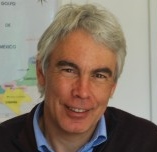Measuring health equity challenges many of the present global concepts and policies on Health. The tragic death toll from global Health inequity (injustice) requires a deep transformation of concepts and dynamics towards the universal right to Health
by Juan Garay*
Head of Cooperation Section, Delegation of the European Union to Mexico
Understanding, Measuring and Acting on Health Equity
from just published book Health Equity: the Key for Transformational Change (Spanish version here)
As the XXIst century reveals, Humanity has reached a peak in inter and intergenerational inequity, Health concepts and principles need to be revisited: the definition of Health needs to include equity and sustainability dimensions and the lack of accountability in the guarantee of the right to Health calls to remind the International Covenant on Economic Cultural and Social Rights (ICECSRs) and its optional protocol as the true commitments to health.
We need to overcome the international denial of measuring Health equity (and instead describing inequalities). Measuring inequalities and acting on poverty only mitigate the root causes of ill health. If we measure inequity and ensure minimum dignity for all we will challenge the present international cooperation framework and progress towards a binding redistribution mechanism to enable the universal right to Health. Such approach would also challenge the present human development indicators as we need to incorporate individual but also collective dimensions of our effects on others.
Health is a universal human right as recognized in the Universal Declaration of Human Rights (UDHR). Health equity -best feasible Health for all- is the main principle of global Health accepted by all countries as recognized in the founding objective of the World Health Organization. However, as the levels of best feasible Health have never been agreed upon, the state and trend of Health equity and inversely the burden of Health inequity have never been measured.
Daring to set best feasible Health standards for all, across and within countries, is essential to operationalize and measure the universal right to Health.
In order to set best feasible (and sustainable to expand the feasibility across generations) Health standards, we identified countries that for the last 70 years (UN available demographic statistics) have complied with three criteria: 1) life expectancy above the world´s weighted (by countries’ population sizes) average, 2) per capita GDP below the world´s weighted average (feasibility, countries above the world´s average cannot be models for all as resources would not be sufficient) and 3) carbon footprint below the planetary boundary (sustainability). This method can be applied at sub-national and regional levels.
Only fourteen countries [1] have constantly met the mentioned criteria. We analysed their average Health indicators disaggregated by age periods, sex, and across time, and enable the calculation of the burden of Health inequity by countries, ages, sex and time periods. Such analysis is represented in charts and maps which are only a small sample of the interactive database of maps and graphs of Global Health equity developed by the Equity Movement.
This analysis concludes that over one in three annual deaths worldwide are avoidable by global Health equity. In the last five-year period the annual average of avoidable deaths was over 17 million deaths, 2000 every hour. Most of the avoidable deaths took place in the countries with per capita GDP below the minimum income threshold defined by the Healthy-Feasible-Sustainable (HFS) models. Such minimum “dignity threshold”, given the average level of resources, allows the definition of a “hoarding threshold” and -between both dignity and hoarding thresholds- an economic equity zone compatible with the universal right to health (and possibly most other human rights).
This tragic death toll due to global injustice challenges the global economic and cooperation framework. The redistribution required to enable all persons in the world to have the chance to enjoy a globally feasible-sustainable minimum level of life expectancy challenges the far lower, unequitable and volatile levels of development “aid”.
The work ends by challenging also the global rating of development (as the Human Development Index) by introducing the dimensions of our effects on others (here or to come) through the effects of hoarding and/or exhausting natural and economic resources.
—————————————————————-
*Juan Garay is a medical doctor from Spain, specialized in internal medicine, infectious diseases and public health. Since the 80s, he has combined clinical, public health, research and design on health systems (as some of the early AIDS treatment programs in Africa), in many countries in Europe, Africa and America, with governments, universities and non-state actors.
In 2002 he joined the European Union, working initially in the design of EU health cooperation policies and programs. He gradually explored the roots of health in the areas of human rights -coordinating the work towards the EU external policy on children rights- and the multisectorial dimensions of health which led to his coordination in the development of the EU policy on global health. In relation to global health challenges, he has focused on research on global health equity in the last years. Since 2013 he works as head of EU cooperation in Mexico, with special emphasis on analysis and policy dialogue on social cohesion.
In parallel to his responsibilities in the EU, Juan Garay is professor of global health in Granada and Madrid, advisor to the South American Institute of Health Governance, visiting lecturer in UC Berkeley, as well as guest lecturer in several universities in America and Europe, where he continues research and academic activities in relation to health and social equity metrics.
[1] From higher to lower average life expectancy 1950-2010 : Cuba, Costa Rica, Albania, Armenia, Georgia, Belize, St Lucia, Sri Lanka, Vietnam, Tonga, St Vincent, Paraguay, Grenada, and Colombia
